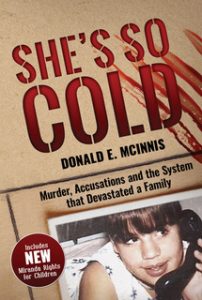Gordon Korman. Restart. Scholastic P, 2017.
As mentioned before on this blog, Gordon Korman is one of our favorite Young Adult (YA) novelists. Restart did not disappoint.
Restart is not as funny as many of Korman’s stories because the main story line is pretty serious. Big-time eighth-grade jock Chase Ambrose gets a restart in his life. A Christmas Carol is an all-time favorite because of the great change that takes place in the heart of Ebenezer Scrooge at the end of the story. Well, Chase Ambrose’s big change comes at the beginning of the story.
Chase accidentally falls from the second-story roof of his house, landing head first. He is not too badly injured except for a concussion, but he has amnesia. He can talk and still has his football muscle memory, but he does not remember a thing from the first thirteen years of his life. Except one thing—he has a vague memory of a little blonde girl in a fancy blue dress.
Chase discovers that prior to his accident not only was he a star athlete, but he was also an incorrigible bully. Eventually, he and his two buddies, Aaron and Bear, went too far. They were arrested for putting some firecrackers in a piano during a school concert.
They were singling out Joel Weber, a nerdy younger boy they liked to pick on. After that incident, Joel’s parents sent him away to a music-oriented boarding school for his own safety. Joel’s three tormentors were arrested for creating a public nuisance and sentenced to community service at the town’s Portland Street Assisted Living Residence—or as Aaron and Bear call it, the Greybeard Motel.
Each chapter is told from the point of view of the various young people in the story. Most of the chapters are by Chase and by Shoshanna Weber, Joel’s older sister who is in Chase’s class at school.
Because of the concussion he received from his fall, Chase is unable to play football for his eighth grade season, even though his team won the state championship the year before. The last time his school had won the championship was when Chase’s father starred for the team.
Mr. Ambrose comes across as an unreconstructed jock-bully himself. He cannot understand why the kids Chase pick on cannot take it. Since the entire story is written from the point of view of middle schoolers, readers have to read between the lines a little bit. Chase lives with his mother, his older brother is away at college, and his father remarried a few years ago and he and his new (trophy?) wife have a four-year-old daughter. Chase observes that even this half-sister Helen is afraid of him.
Indeed, as he walks through the halls of his junior high, he notices that many kids try to avoid him or turn away from him. Since he cannot play football, he decides to join the video club. His friends Aaron and Bear tease him about this, telling him that he has become a vidiot and joined dork nation.
His joining the club becomes awkward because the president of the club is Shoshanna, who understandably hates Chase’s guts. But Chase does not understand because he remembers nothing.
This all sounds very serious, and it is, but this book is by Gordon Korman, so there is bound to be some silliness, and there is. Most of the humor comes from the crazy stunts that video club member Brendan Espinoza comes up with in order to get attention on YouTube. I do not want to write too many spoilers, but let us just say that they will have you laughing. One involves a tricycle and a car wash, another involves pancake syrup and a pile of leaves.
In Chase’s case, his restart comes not from a ghostly visitation, but by gradual discoveries (we cannot call them memories because he did not even remember his mother) about his past. While the story is not religious, it would remind many readers of the new chance that God gives people through the work of Jesus. In some ways, we all recognize that we need a restart, a do-over.
It is never easy. Chase has to accept responsibility for his past actions even though he is ashamed of them now. In fact, it gets complicated enough that he has to go to court for another crime he committed before his accident. The fact that he has changed means little to the judge because of his prior record. (For readers of Pilgrim’s Progress, a little like the story of the shopkeeper’s debtor.)
Serious stuff, but with enough laughs to keep it light. Thank you, Gordon Korman, once again.
